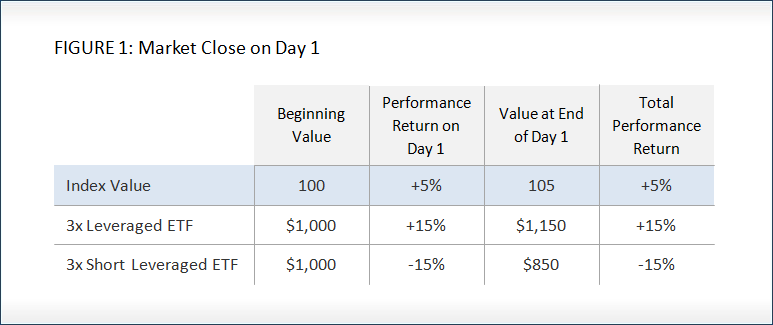Investing in Leveraged ETFs
Post on: 2 Май, 2015 No Comment

You want to make as much money as you can in the market. So if you’re already looking for strong long-term returns on stocks, why not double or triple your bet?
That’s the idea behind leveraged exchange-traded funds (ETFs). These funds are designed to magnify the movements of the markets they track. ETFs that seek to double the returns of various indexes and stock sectors have been around for a couple of years, with ETF managers such as ProShares and Rydex dominating the field. Now, in another example of the one-upmanship that dominates the ETF world, a new series of leveraged funds will go even further and try to triple the market’s returns.
If you like high volatility in your portfolio, then these funds are virtually guaranteed to produce exciting price movements on a short-term basis. But if you’re hoping to triple your returns over the long haul, you may be in for a nasty surprise, since leveraged ETFs won’t necessarily give you the results you’re looking for.
How do these things really work?
Leveraged ETFs resemble regular index ETFs in that they’re geared to track the returns of a given market index. To generate ramped-up returns, however, most leveraged ETFs invest in a combination of stocks and derivatives. including options, futures, and swaps. For instance, the ProShares Ultra QQQ ETF, which tracks the Nasdaq 100 index, holds a combination of swaps and futures contracts in addition to shares of Apple ( Nasdaq: AAPL ). Microsoft ( Nasdaq: MSFT ). and Qualcomm ( Nasdaq: QCOM ) .
Also like regular index ETFs, you can find leveraged ETFs that cover nearly every part of the stock market. In addition to broad-market ETFs that track the Dow, S&P 500, and Russell 2000 small-cap index, you can also choose to focus on particular sectors. The ProShares Ultra Oil & Gas ETF, for example, lets you double your bet on an energy index that includes Chesapeake Energy ( NYSE: CHK ). Transocean ( NYSE: RIG ). and Chevron ( NYSE: CVX ) .
Finally, you can also bet against stocks by investing in leveraged ETFs. Funds such as the Rydex Inverse 2x S&P 500 ETF use short derivative strategies to make money when the market falls.
Show me the money
The key to these funds is that they all explicitly seek to double or triple the daily returns of the investments they track. Over short periods, these derivative strategies do a good job of helping leveraged ETFs achieve those intended goals.
What many investors mistakenly assume is that if you get those supercharged returns every day, you’ll also double or triple your long-term return. It doesn’t always work out that way.
You can see this most easily by looking at both bullish and bearish leveraged ETFs at the same time. For instance, the Nasdaq 100 has gained about 5% over the past year. Therefore, you might expect that the bullish 2x ETF would have gained 10%, while the bearish 2x ETF would have dropped 10%. Here are the actual results:














